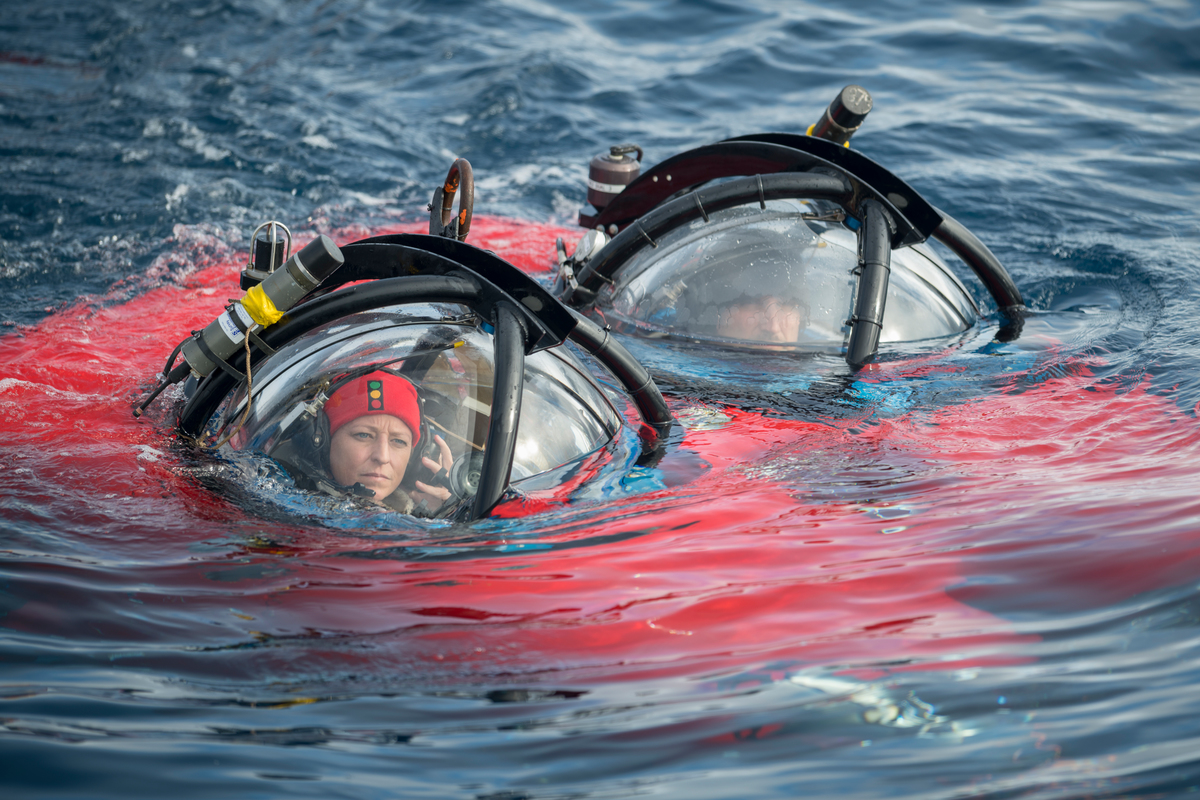Most people would be surprised about how many species of cold-water corals and amazing sponges you’d find on the bottom of the Antarctic Ocean. Even as the scientist who has identified three quarters of the registered seafloor communities designated for special protection in the Antarctic, I’ve never seen them myself either!
That is, I’ve never seen them in their natural environment before. Until now.

Dr. Susanne Lockhart, Antarctic biologist, and submarine pilot John Hocevar, Director of Oceans for Greenpeace USA sitting in a two person submarine about to be launched from Greenpeace ship the Arctic Sunrise.
The seabed of this truly special place is home to corals and other animals that create 3D structures, providing shelter for fish and habitat for countless other organisms. They are an indispensable element in a complex ecosystem which feeds the Antarctic Ocean and all the other larger and more well-known species in it like penguins, seals and whales.

What lies beneath the Antarctic
The reason why right now I’m more excited than I’ve ever been in my 25 years as an Antarctic biologist is that, this time, I get to go to the bottom of the sea myself! Having done lots of expedition-based research into the depths of this unique ocean, now I can see first-hand what I have been studying for so many years.
Usually, this type of scientific research is hard labour; digging through the large amount of bycatch caught in trawl nets and the time-consuming job of sorting it into taxonomic groups for analysis. But the destruction that this method causes has always disturbed me. But here we are, gently gliding by in a two-person submarine, taking photographic evidence and collecting a few specimens that might even be new species.

Down we go!
I became pretty obsessed with the marine invertebrate life of the Antarctic region at quite a young age. Since then, I’ve encountered and studied some truly impressive seabed communities in the Antarctic and now I’m venturing out to locate additional areas that are in need of special protection.
In a really meaningful way, our exploration of the bottom of the sea will help determine specific areas that should be a priority for protection from an expanding commercial fishing fleet, which jeopardises the wellbeing of one of the world’s last pristine marine ecosystems; an ocean that connects all oceans.
The evidence of any ‘Vulnerable Marine Ecosystems’ that we encounter on this expedition will be submitted to the Commission for the Antarctic Ocean. It is our hope that registering these ecosystems will support and strengthen the submitted proposal for what will be the largest protected marine area in the world.

An Antarctic feather star, Promachocrinus kerguelensis, found at approximately 300 meters depth
I am eager to see these marine protected area proposals develop and mature and be passed by the Commission for the Antarctic Ocean. In this endeavor, the objectives of Greenpeace and I align, and I feel privileged to collaborate with them on this project.
Hopefully my dream as a scientist coming true just now – going to the bottom of the Antarctic Ocean – will help achieve an even bigger dream: to see it protected!
Dr. Susanne Lockhart is an Antarctic biologist with the California Academy of Sciences, currently aboard the Greenpeace ship Arctic Sunrise in the Antarctic Ocean.



